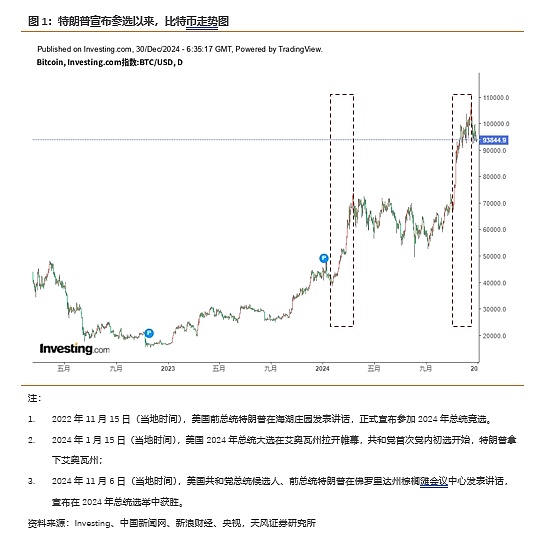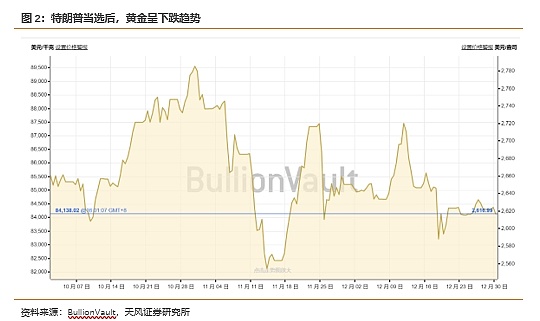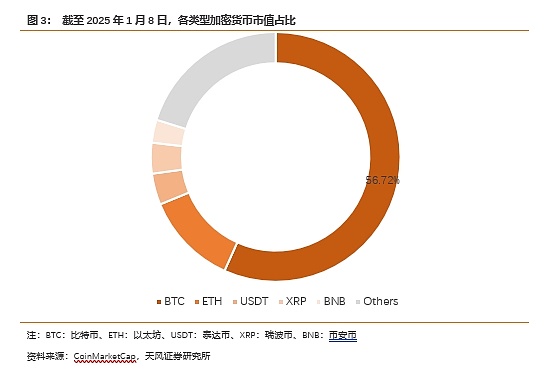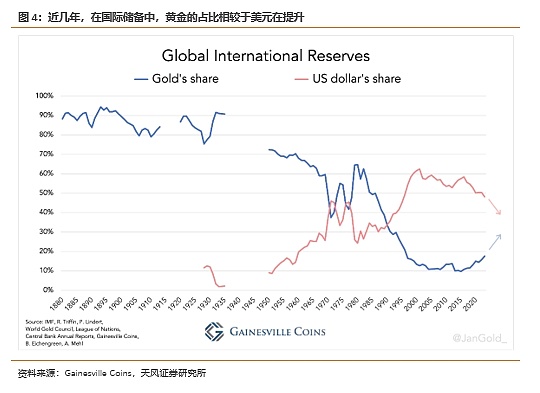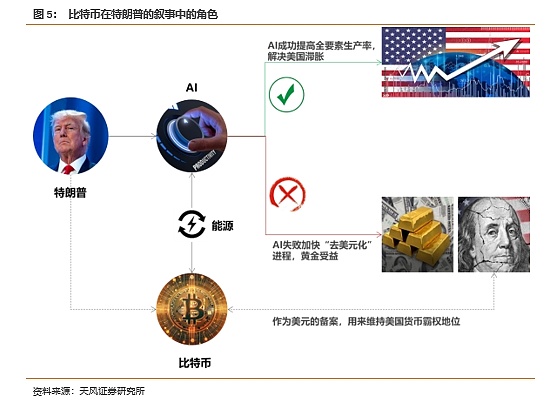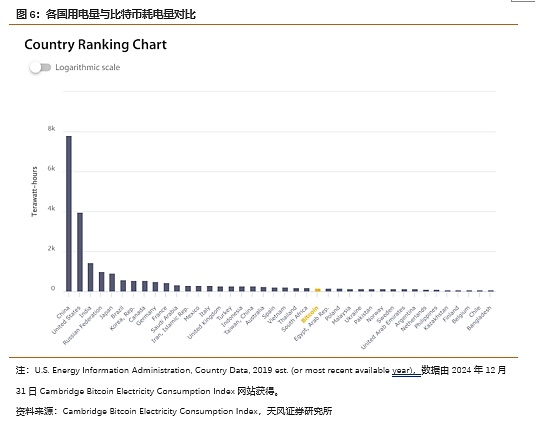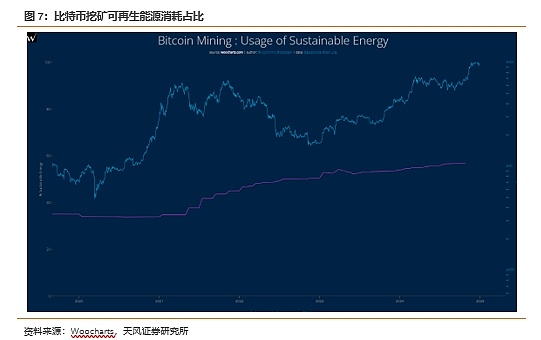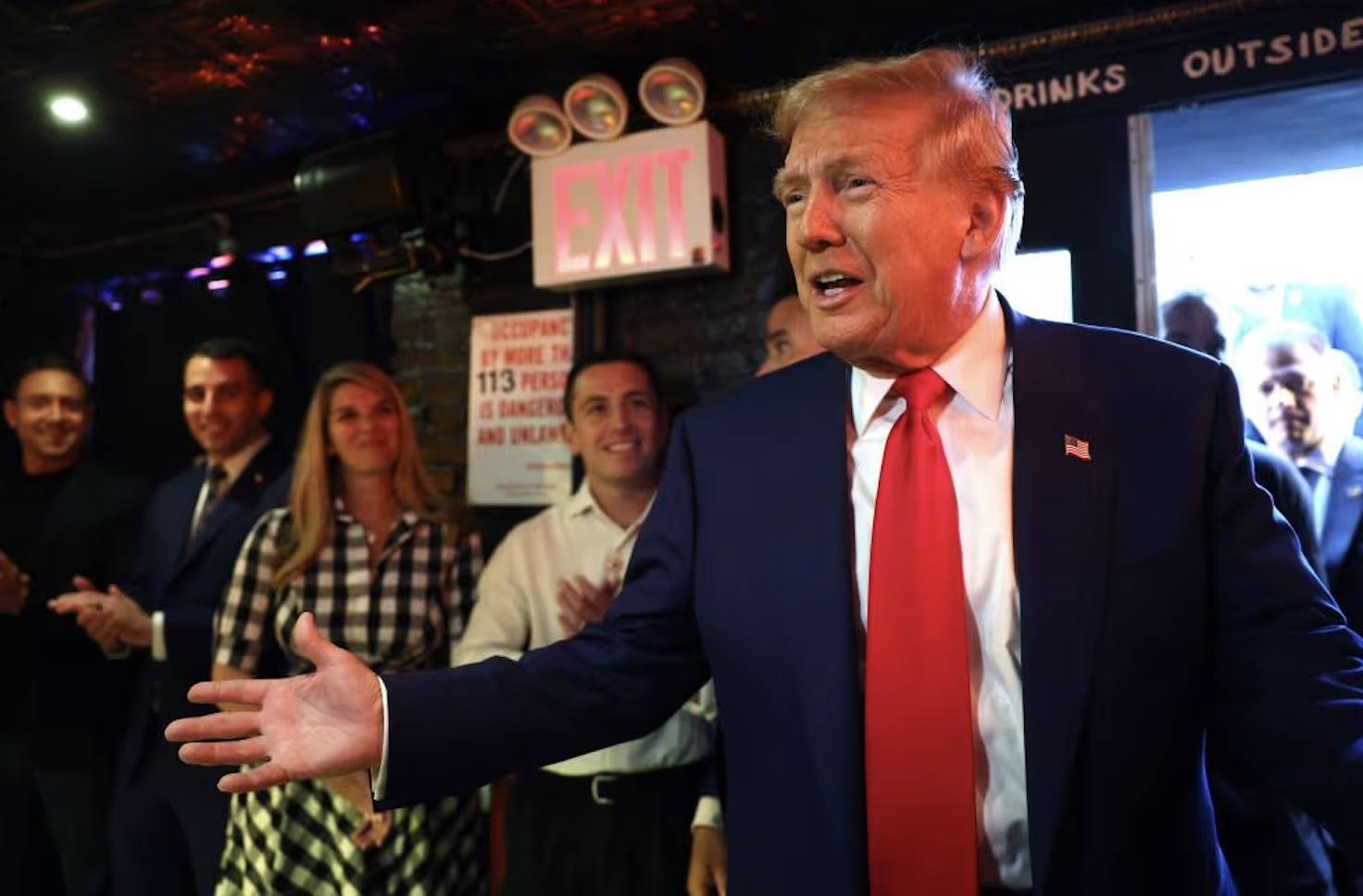Author: Tianfeng Macro Song Xuetao
Trump has fulfilled his campaign promise on Bitcoin, nominating crypto supporter Paul Atkins as the SEC chairman to replace the current chairman Gary Gensler, who is known for his tough regulatory stance on cryptocurrencies. After Trump's election, the price of Bitcoin quickly broke through $76,000, setting a new historical high, and then continued to surge, breaking through the $100,000 mark.
Trump was a crypto skeptic in the 1.0 era, but in the 2.0 era he has become an active advocate of "making America the global crypto capital", a major reason being that MAGA needs an alternative to maintain the hegemony of the US dollar, and Bitcoin has been endowed with a special mission beyond technological development.
Trump's 2.0 is hoping to escape the political fate of being ousted due to stagflation by relying on AI to improve fiscal efficiency and total factor productivity, but if AI fails to achieve the expected effect, the monetization of deficits will accelerate the "de-dollarization" process. Over the past two years, gold has become a beneficiary of de-dollarization and has become a favorite of investors.
However, MAGA cannot tolerate the undermining of the dollar's monetary hegemony, so Trump needs an alternative to maintain the dollar's position. This alternative must be something that the US can control and exert influence on, and gold is probably no longer an option, while cryptocurrencies represented by Bitcoin may still have a chance. But the essence of currency is credit, and if there is no credit, it must be injected.
1. The Inseparable Relationship between Trump and Bitcoin
Since announcing his re-election bid for president, Trump's relationship with the crypto world has become increasingly close. First, Trump's "deregulation" stance is in line with the needs of the crypto world. Secondly, the Silicon Valley elite, including Musk and Peter Thiel, are finding it increasingly difficult to tolerate the increasingly left-leaning policies of the California government and the Democratic Party, such as antitrust threats to the growth of tech giants focused on efficiency, which has indirectly driven the cooperation between Trump and Silicon Valley, to some extent also becoming a catalyst for the development of Bitcoin.
Since Trump announced his presidential campaign, the price of Bitcoin has experienced two significant growth waves, both exceeding 40%, from around $40,000 to around $70,000 after his Iowa caucus victory, and further from around $70,000 to around $100,000 after winning the presidential election.
The rise in Bitcoin prices is related to Trump's binding of the MAGA concept to it during the campaign. Trump said "Bitcoin is a miracle of technology and human achievement, and will surpass gold in the future, and proposed to give Bitcoin the same reserve currency status as the US dollar, maintain a national strategic Bitcoin reserve, never sell the Bitcoin seized by the government, and make the US the crypto capital".
2. Bitcoin is Not a Substitute for Gold
After Trump's election, the decline in gold prices contrasted sharply with the rise in Bitcoin prices. The discussion of whether cryptocurrencies, especially the so-called "digital gold" Bitcoin, can replace gold has resurfaced.
(1) Bitcoin and gold have three similarities:
First, both have a scarcity of supply. Specifically, as of the end of 2023, the above-ground stock of gold is 212,582 tons, and the underground reserves are about 59,000 tons. The Bitcoin protocol stipulates a total cap of 21 million coins, and the Bitcoin mining reward, or "block reward", is halved every four years, which is a key mechanism for maintaining its scarcity, meaning that mining difficulty will gradually increase.
Secondly, both are decentralized and non-sovereign assets. Gold and Bitcoin are not issued by a central authority. That is, the central bank cannot decide to mint more gold coins. Similarly, the finance minister cannot order to slow down or speed up Bitcoin mining. In the past, investors chose to invest in gold to hedge against currency and fiscal policy risks, and now Bitcoin has become a new choice.
Also, both have a certain speculative and hedging property, but with a significant difference in degree. Bitcoin is more often a risk asset with strong speculative properties, only occasionally exhibiting hedging characteristics. Gold, on the other hand, is like a mirror image of Bitcoin, with more pronounced hedging properties and only occasionally exhibiting speculative characteristics. The speculative property of gold may be a momentum effect when the price rises rapidly, but this reaction is usually short-lived, as gold has different characteristics from Bitcoin.
(2) Gold and Bitcoin also have three differences:
First, gold has physical uses, involved in industrial production and personal consumption, while Bitcoin is a digital asset composed of code, a virtual existence. Physical things have physical uses, and virtual things also have virtual uses, such as Bitcoin may be used for money laundering, tax evasion, and financing illegal activities in the gray area, which also poses challenges for global anti-money laundering regulations, especially cross-border capital tracing.
Secondly, gold has a unique position in the commodity market, and other precious metals, whether silver or platinum, are difficult to compare with gold. Bitcoin currently still dominates the cryptocurrency market, accounting for about 56.72% of the total cryptocurrency market capitalization, but more and more Bitcoin alternatives are emerging, such as Ethereum, Binance Coin, etc.
Finally, gold and Bitcoin also differ in terms of security. Gold as a physical asset is not easily affected by network attacks or digital fraud, but it needs to be stored securely, especially in cross-border transportation. Bitcoin holders may be subject to hacker attacks or private key loss, thereby losing control, and lack additional security measures. Bitcoin wallets are divided into hot wallets (storing private keys online) and cold wallets (storing offline). In Bitcoin transactions, users must use private keys for digital signatures to prove their control and ownership of the wallet. However, hot wallet theft by hackers is a common occurrence. As for cold wallets, investors also often suffer large Bitcoin losses due to equipment damage or loss.
3. Bitcoin is Plan B When AI Fails
Trump, who is returning to the White House, has realized that if he does not solve the efficiency problems of the US fiscal system and manufacturing production, the US economy will become increasingly dependent on deficit monetization, and once a critical point is breached, a debt spiral will occur, and the hegemony of the US dollar will be rapidly weakened. Therefore, the governing philosophy of Trump's second term is very clear, to use AI to improve production efficiency and government fiscal efficiency, to get the US out of the stagflation track, and maintain the globally recognized reserve currency status of the US dollar. In this process, Musk will play an important role, so Trump has elevated Musk's political status, making him the most important person around him, and Musk has already directly influenced the US government's budget bill.
If this fails, the US dollar will not only depreciate relative to gold, but may even further undermine its position as a global reserve currency and sovereign credit currency, although the probability in the short term is low, but such shaking often suddenly accelerates at a certain point. Historically, the transition of great power status often goes through a long period of parallel and competition, and the final power transition is completed in a short period of time. Therefore, Trump needs to develop a Plan B to preserve the status of the US dollar, to cope with the situation where AI technology fails to achieve improved production efficiency, reduced fiscal deficits, lower inflation, and narrowed wealth gap, and this alternative plan is Bitcoin.
Although there is no currency that can replace the US dollar in the short term, pegging Bitcoin to the US dollar can be seen as a hedging strategy against the status of the US dollar. If the global reserve currency status of the US dollar is seriously threatened, the US can at least weaken the position of gold by controlling Bitcoin, and continue to maintain the monetary status of the US dollar.
4 Energy is the key to technological revolution
After meeting with executives of several crypto mining companies, Trump proposed in June 2024 to make Bitcoin fully "Made in America". Energy, as a key limiting factor for Bitcoin mining and transactions, is of paramount importance. The energy demand of Bitcoin is entirely dependent on the power supply. According to estimates by the University of Cambridge, the annual electricity consumption of Bitcoin operations is about 172.1 terawatt-hours, exceeding the annual electricity consumption of countries such as Egypt, Malaysia, and Poland. In Texas, where crypto mining companies are concentrated, 10 mining companies will consume more than 1,800 megawatts of electricity per year.
Bitcoin miners tend to seek low-cost power supplies to ensure profitability. In 2023, the cost of 81% of new renewable energy projects (about 382 gigawatts) will be lower than fossil fuel projects. For example, the cost of photovoltaic power generation will drop to around 4 cents/kWh in 2023, 56% lower than fossil fuel and nuclear power generation, so the proportion of renewable energy used in Bitcoin mining is constantly increasing. According to Woocharts data, as of October 2024, the proportion of mining using sustainable energy was 56.8%.
Looking back on history, a country's strength is often closely linked to its energy production capacity. For example, the technological revolution enabled the UK to make breakthroughs in coal mining and utilization technology, which provided the basis for the long-term status of the pound. The United States has consolidated its global leadership position of the US dollar and the United States through controlling the extraction, transportation and consumption of oil, as well as its influence on global geopolitics. The countries that master the advanced productive forces dependent on energy can stand out in the century-long competition, from trade to manufacturing, to consumption and finance, and establish their dominant position.
Nowadays, the constraints of traditional energy are gradually weakening, and new energy represented by sustainable energy is on the rise. For a country, the development and mastery of new energy has become crucial, because the low cost, stable and secure supply, decentralized layout, and mobile energy supply system are important foundations for triggering a new round of technological revolution and productivity improvement.
So, AI represents plan A for maintaining the status of the US dollar, and crypto represents plan B for hedging against the shaking of the US dollar's position, but whether it's Bitcoin or AI, energy is an indispensable core element. The essence of currency is credit, the essence of credit is order, the essence of order is technological competition, and the essence of technological competition is energy efficiency. The country that masters new energy can lead the application of new technologies, improve production efficiency, expand the scope of efficient and low-cost applications, and thus improve total factor productivity. Whichever country wins this competition, once the new order is established, the historical mission of the great changes in the past century represented by gold will also be declared complete.


